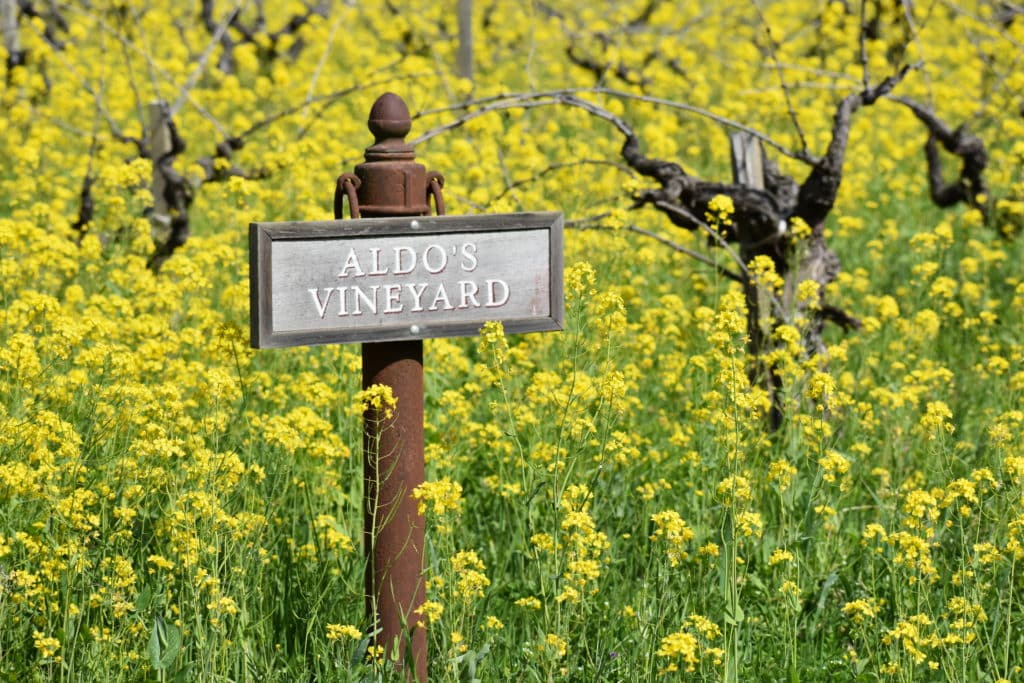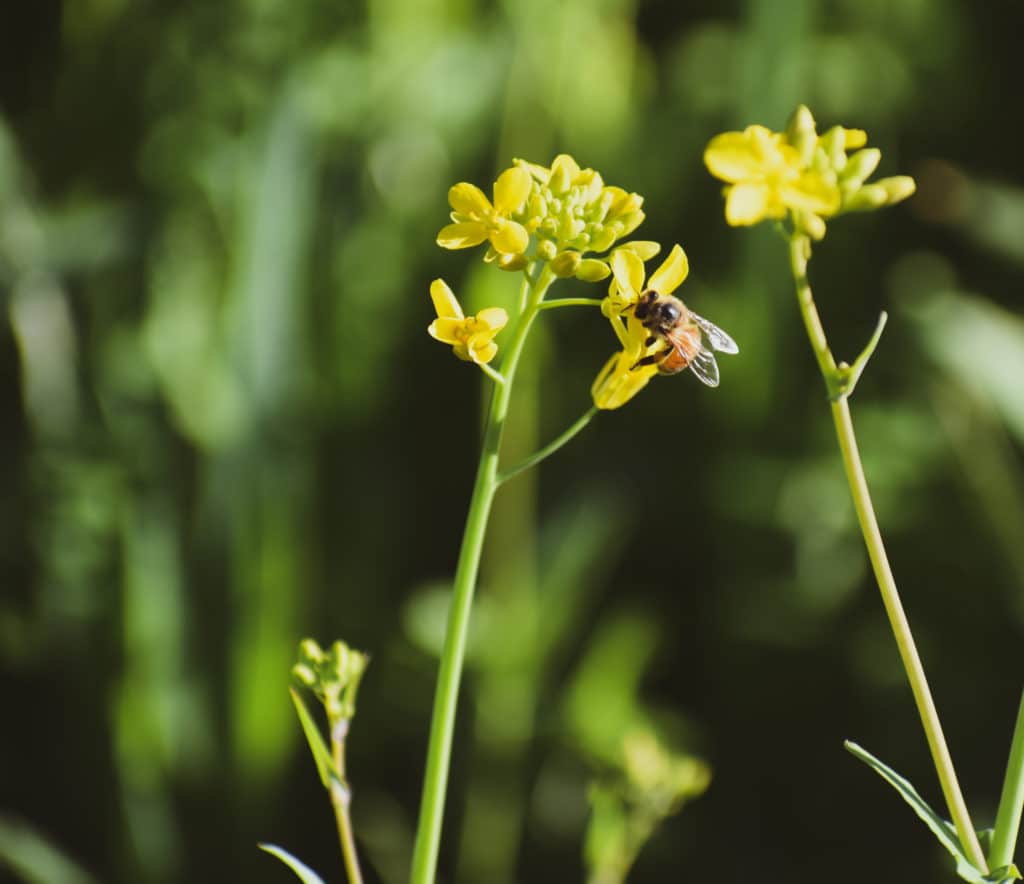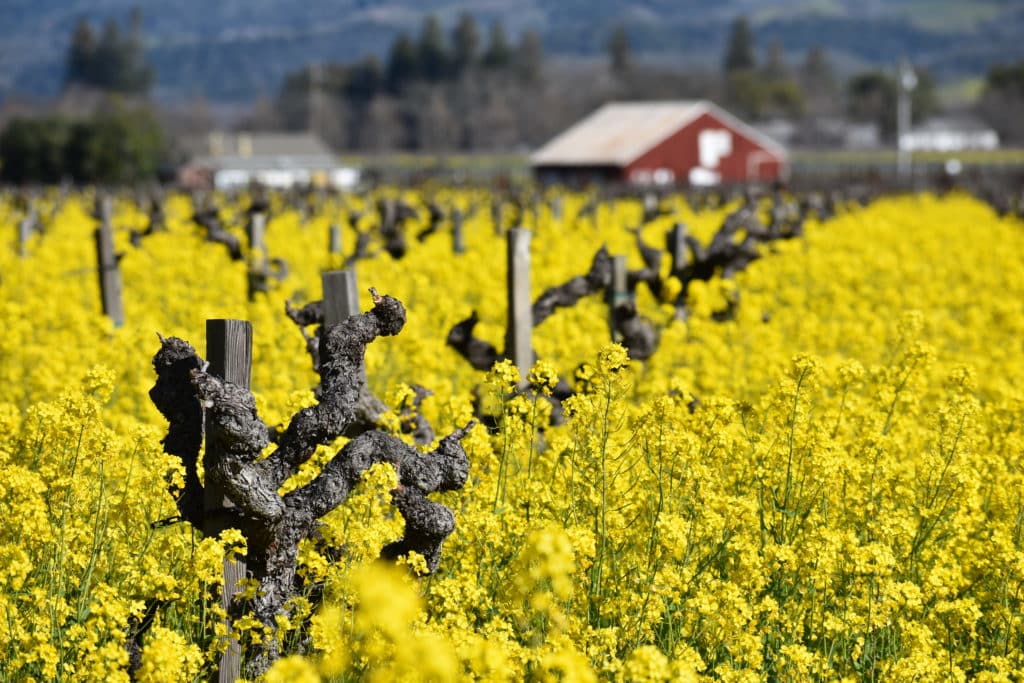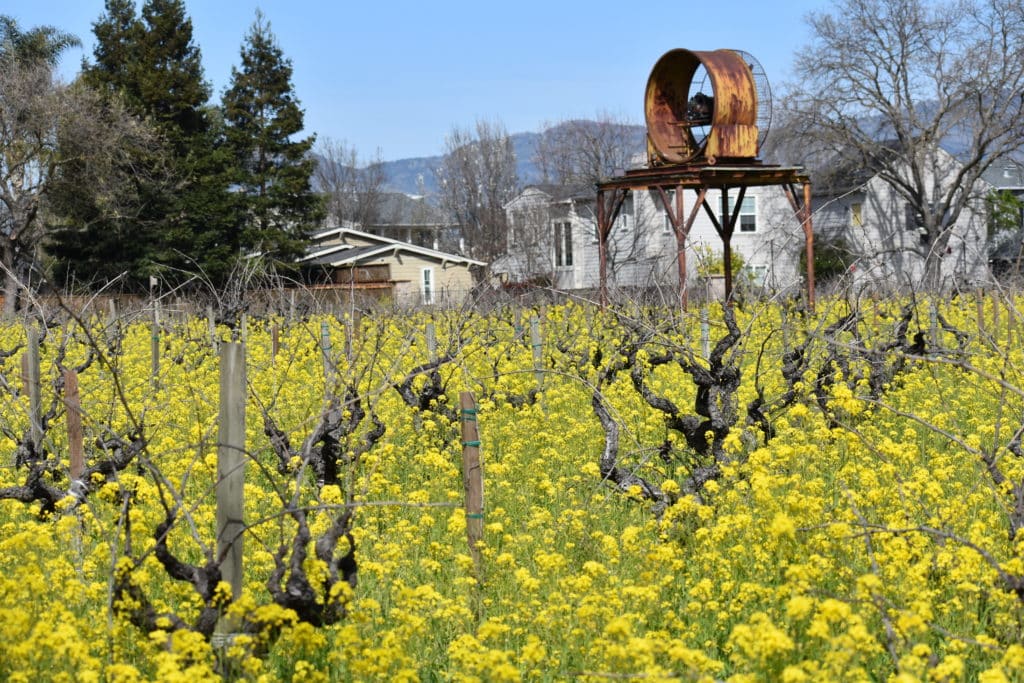
If you have recently visited Napa Valley, you may have seen the thousands of people pulled off taking photos in the mustard off Route 29. Besides creating a sunny blanket over the Napa Valley, what is the purpose of planting mustard throughout the vineyard? Mustard is the popular beneficial cover crop and not a weed by any means.

Let’s start with defining cover crop! Cover crop is “a crop grown for the protection and enrichment of the soil”. Mustard is a beneficial cover crop that is either planted or sprouts voluntarily in vineyards to prevent against soil erosion, recharge the soil with nitrogen, and to help suppress the population of nematodes.

Nematodes are pesky microscopic worms that cause damage to the roots of the vines which leads to vine decline. Being from the Brassicaceae family, mustard contains chemical compounds that act as a biofumigant. These compounds are called glucosinolates that when combined with water, chemically break down to a compound called isothiocyanates. Isothiocyanates have nemacidal and fungicidal properties which make them perfect for preventing and suppressing nematodes in the vineyards. To make it simple, nematodes hate the bitterness of the mustard so filling the valley with mustard only makes sense. Aside from being an organic way to control these harmful pests, planting this cover crop also helps to protect our environment because there are no harmful chemicals being sprayed in the vineyard.

The process of introducing mustard as cover crop begins in late October. Just after harvest has come to an end, we spread plant-based compost throughout our estate vineyards. The compost helps add to the organic matter and enriches the soil with nutrients. Let’s just say this year must have had extra mustard seeds and the nutrients were perfectly balanced because the mustard at the winery stands about 4 feet tall! You could say it is a mustard forest here at Robert Biale Vineyards!
Who would have known this beautiful plant served other purposes besides providing a beautiful back drop to photographers!
Resource: